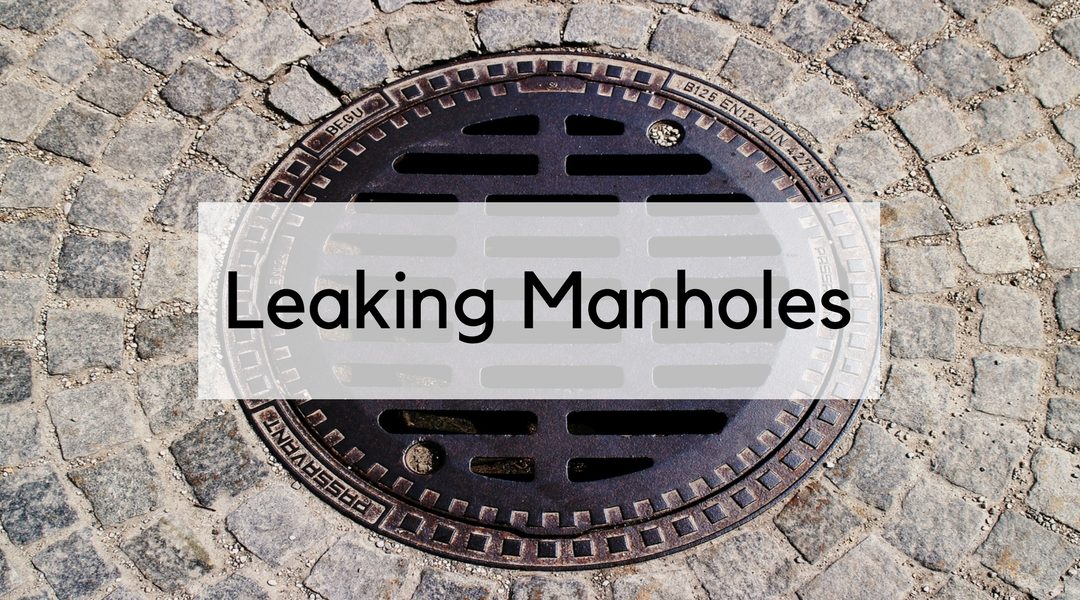Manhole covers are such an everyday sight to us that we can almost cease to see them entirely. Their commonplace appearance makes them no less important, though, and they play a vital role in allowing the highways agencies and utility companies easy access to underground utilities and pipework. Beneath the covers they are host to a whole range of equipment for different services, like telephone, electric and gas supply, as well as water and sewage pipes.
Whilst manholes are necessary, they are hugely susceptible to problems like leaks. Being exposed to the weather and to erosion and damage from road traffic, they can also suffer from problems with the equipment that they are housing, like the pipes that manage sewage and manage the flow of water. If these pipes leak, the water can only go upwards, where it will be eventually forced up out of the manhole, causing surface water and flooding.
Situations in which leaks can occur include:
- Dry joints – when new cement has been placed on top of old cement, creating a void between the two where leaking water can gather.
- Incorrectly sealed water-tight joins;
- Damaged, corroded or cracked pipes;
- Old, damaged or faulty valves can leak water;
- Old or worn manhole covers that do not properly seal off the manhole;
Adverse weather conditions can cause havoc with pipework and manholes. A small leak can occur long before it is noticed but during periods of adverse weather, they may be spotted more easily as the water and damage from them could be more visible. If the pipework experiences large amounts of excess water from prolonged storms or flooding, the manholes can fill very quickly and any overflow will lead to problems for road users and highways agencies.
How can you identify water leaking through the walls? How can leaks in manholes and surrounding pipework be investigated and identified?
The answer lies in our new and innovative technology, which was specifically designed to provide non-invasive investigation via infrared scanning equipment, highlighting the ground water ingress points and pinpointing the location of these weaknesses to allow the to be quickly remedied. We will also scan any pipework within and around the manhole walls for indications of leaks.
If a leak within your pipework cannot be identified but there is still ground water present, the leak may be just outside of the manhole walls, or even much further down in the pipework. In this instance, we will undertake a larger investigation, during which our leak detection experts will pump gas through the suspected pipe network from a remote location. If a leak is present, the gas will escape through it and the leak will be identified.
If you are responsible the maintenance of manholes or you are concerned that you have a leak in one of your surrounding pipes, call our experts now and arrange to your manholes scanned, ensuring they remain flood free.
For information on how we can help if you suspect a leak, consult LeakDTech’s professionals now!
Contact Us For More Information#LeakDtech #Manholes #Traffic #Roadworks #Utilities #Groundaccess




